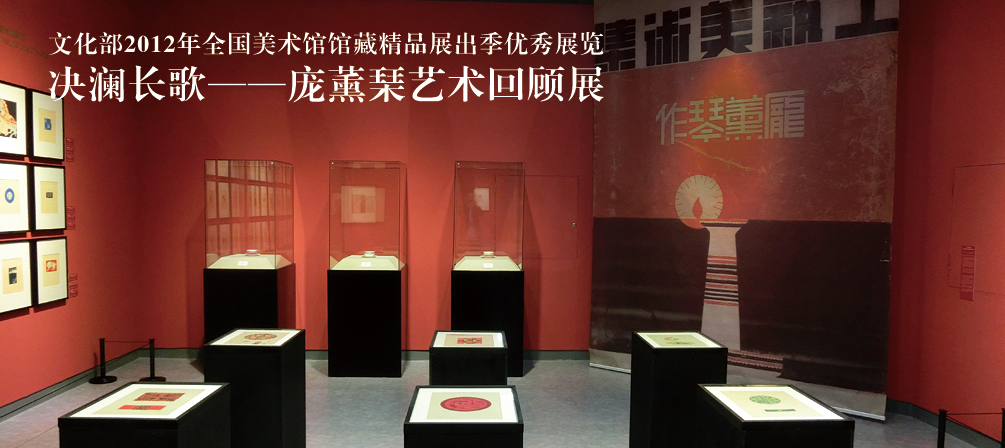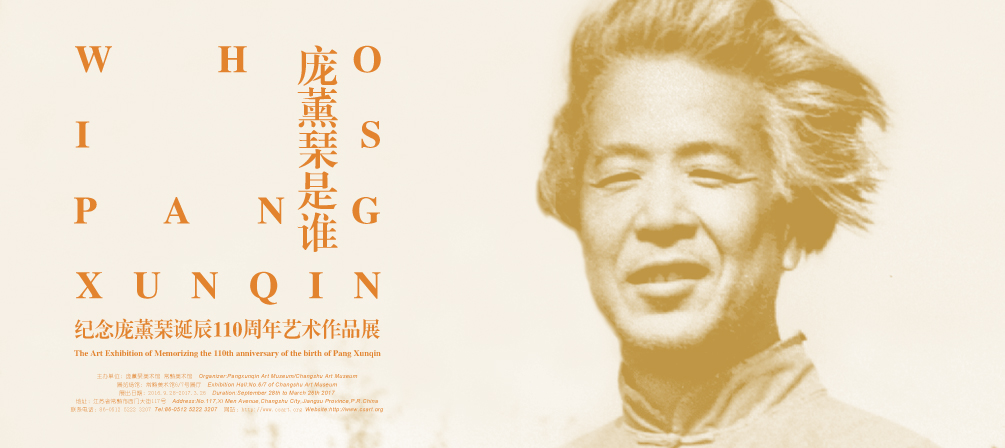吴衣带水——旅美画家仲丹勋异域风情作品展
主办单位:常熟市委宣传部、常熟市文化广电新闻出版局、常熟市人民政府侨务办公室
协办单位:常熟美术馆、常熟市美术家协会
展览场地:常熟美术馆6号展厅
展出时间:2018年9月25日至10月21日
阅读量:3333
前 言
文化交流在国际关系中一直占有重要地位,而文化的价值就在于共享,让不同地域或国度的人们分享各自文化的美好、体验多元文化的魅力。文化既能体现人类共同价值的共同性也能体现民族价值的民族性,国与国之间的强有力联系来源于两国人民对对方文化传统的深度了解。艺术是全人类共同的语言,通过艺术作品,人们可以最大限度地了解一个国家的历史传统,因而那些深耕本民族文化传统、同时又汲取多元文化营养的艺术家,在全球化进程不断加快的今天就有着独特而非凡的价值。
中国画的创新从未间断过,基于传承的创新使得古老的中国画艺术在日新月异的新时期焕发出新的光彩。上世纪九十年代初,从小浸润于传统书画,受到烟云滋养的仲丹勋离开了山水秀丽、园林典雅的家乡远赴美国。这个国度开放自由的民族精神与苍茫广阔的自然风光带给了她不同的体验。面对东西方文化的交流与碰撞,中国画的包容性给了这两种经验融合的可能。她以中国画的工具描绘异国的建筑城镇和山川峡谷,创作对象的转变也使她在创作方法上有了诸多思考,进而在用笔用色以及图式等方面有了多方位的实验与探索。仲丹勋尝试以异国的人文景观体现中国艺术精神中的诗意,以东方视角看待现代化的城市生活,其中常常蕴含着异乡人的思乡之情。
本次展览是常熟美术馆建馆十多年以来,首次展出常熟籍海外华人女画家的作品。当今全球化时代,一个民族艺术的发展离不开其他民族艺术的影响,而世界艺术则需要世界各民族艺术家的共同努力。作为中国文化的使者,仲丹勋为增进中美文化的交流做出了重要贡献。本次展览共展出仲丹勋中国画作品近五十幅,这些画作既体现了中国画包容并蓄的艺术精神,也是中西方文化交流的充分见证。
中国画的创新从未间断过,基于传承的创新使得古老的中国画艺术在日新月异的新时期焕发出新的光彩。上世纪九十年代初,从小浸润于传统书画,受到烟云滋养的仲丹勋离开了山水秀丽、园林典雅的家乡远赴美国。这个国度开放自由的民族精神与苍茫广阔的自然风光带给了她不同的体验。面对东西方文化的交流与碰撞,中国画的包容性给了这两种经验融合的可能。她以中国画的工具描绘异国的建筑城镇和山川峡谷,创作对象的转变也使她在创作方法上有了诸多思考,进而在用笔用色以及图式等方面有了多方位的实验与探索。仲丹勋尝试以异国的人文景观体现中国艺术精神中的诗意,以东方视角看待现代化的城市生活,其中常常蕴含着异乡人的思乡之情。
本次展览是常熟美术馆建馆十多年以来,首次展出常熟籍海外华人女画家的作品。当今全球化时代,一个民族艺术的发展离不开其他民族艺术的影响,而世界艺术则需要世界各民族艺术家的共同努力。作为中国文化的使者,仲丹勋为增进中美文化的交流做出了重要贡献。本次展览共展出仲丹勋中国画作品近五十幅,这些画作既体现了中国画包容并蓄的艺术精神,也是中西方文化交流的充分见证。
常熟美术馆
Foreword
Cultural exchanges have always played an essential role in international relations. The value of culture exists in allowing people from different regions and countries to share the beauties and charm of their heritage. Through the marriage of different cultures, there will always be an undercurrent that ties different peoples together-- human values. A healthy relationship between countries stems from the deep understanding of others’ traditions, and oftentimes the common language between two civilizations is art. Through the fine arts, people can genuinely immerse themselves in a country’s history and traditions. Therefore, artists who have profoundly cultivated their own cultural traditions while engaging in the benefits of multiculturalism help accelerate the process of globalization. Their works bring extraordinary and unique value to society.
Traditional Chinese painting has constantly been evolving. While still utilizing the classic art techniques as a foundation, the influence of modern-day society has allowed this Chinese art genre to radiate a contemporary luster. Before she left for the United States in the 1990s, Danxun Zhong grew up with a childhood full of traditional painting and calligraphy, nurtured under a whirl of smoke and clouds, with magnificent scenery and elegant gardens. As she lived in the States, the national spirit of openness and freedom, as well as the sweeping rolling plains and glittering multicultural cities, gave her new insights and experiences far different from home. Faced with an exchange and collision of Eastern and Western cultures, she encompassed the tools and methods of Chinese painting to fuse her two homes together. Through this, she created a painting style that depicts foreign architectural towns juxtaposed with sprawling mountain valleys. By changing the subjects of her artwork, she deliberated and explored new creative methods of brushwork and colors. Her distinctive style of fusing the Chinese artistic spirit with the experience of living in an urban Western country creates a perspective filled with an occasional inexplicable homesickness of missing home, while being at home.
This exhibition is the first time in more than 10 years since the establishment of changshu art museum to exhibit the works of a female expatriate artist. In today’s era of globalization, the development of a national art is inescapable from the influence of other foreign art and requires the joint effort of artists around the globe. As an envoy of Chinese culture, Danxun Zhong has made essential contributions to enhancing the exchange of Chinese and American culture. The exhibition features nearly 50 Chinese paintings by Danxun Zhong . These paintings not only reflect the artistic spirit of Chinese arts, but also allow viewers to fully witness the cultural exchanges between China and the West.
Traditional Chinese painting has constantly been evolving. While still utilizing the classic art techniques as a foundation, the influence of modern-day society has allowed this Chinese art genre to radiate a contemporary luster. Before she left for the United States in the 1990s, Danxun Zhong grew up with a childhood full of traditional painting and calligraphy, nurtured under a whirl of smoke and clouds, with magnificent scenery and elegant gardens. As she lived in the States, the national spirit of openness and freedom, as well as the sweeping rolling plains and glittering multicultural cities, gave her new insights and experiences far different from home. Faced with an exchange and collision of Eastern and Western cultures, she encompassed the tools and methods of Chinese painting to fuse her two homes together. Through this, she created a painting style that depicts foreign architectural towns juxtaposed with sprawling mountain valleys. By changing the subjects of her artwork, she deliberated and explored new creative methods of brushwork and colors. Her distinctive style of fusing the Chinese artistic spirit with the experience of living in an urban Western country creates a perspective filled with an occasional inexplicable homesickness of missing home, while being at home.
This exhibition is the first time in more than 10 years since the establishment of changshu art museum to exhibit the works of a female expatriate artist. In today’s era of globalization, the development of a national art is inescapable from the influence of other foreign art and requires the joint effort of artists around the globe. As an envoy of Chinese culture, Danxun Zhong has made essential contributions to enhancing the exchange of Chinese and American culture. The exhibition features nearly 50 Chinese paintings by Danxun Zhong . These paintings not only reflect the artistic spirit of Chinese arts, but also allow viewers to fully witness the cultural exchanges between China and the West.
Changshu Art Museum

仲丹勋,女,1960年生于江苏省苏州市。美籍华人,画家。
上世纪八十年代初,拜苏州名家,苏州国画院第二任院长、吴门画派研究会会长吴·木先生为师,为入室弟子。近年又拜学院派画家,苏州国画院第四任院长周矩敏教授为师,进入新绘画创意。
在绘画美学专业上,研学于上海复旦大学、解放军艺术学院等院校。作品多次参展并获奖, 被中国人民革命军事博物馆,海南多所地方博物馆和常熟博物馆等收藏。曾在苏州举办个人画展。
二十世纪九十年代初移居至北美,并游学于KANSAS CITY ART INSTITUTE 等艺术院校。作品被画廊和个人收藏。
三十多年创作中,尝试将吴门画派的山水花鸟写意中的古韵内涵,浸润贴近现实生活,融入西方绘画中的写实元素进行创作。用中西合璧途径,在线条、质感、空间、色彩、厚重上进行重构,探寻写实与写意、笔墨技巧与色彩搭配之间的转化关系,使画面视觉结集成当下语态,表现当代生活。墨透色,景造境,笔传韵,以色染意,以气传神。让人体验东西方绘画意境的新感觉。
在绘画美学专业上,研学于上海复旦大学、解放军艺术学院等院校。作品多次参展并获奖, 被中国人民革命军事博物馆,海南多所地方博物馆和常熟博物馆等收藏。曾在苏州举办个人画展。
二十世纪九十年代初移居至北美,并游学于KANSAS CITY ART INSTITUTE 等艺术院校。作品被画廊和个人收藏。
三十多年创作中,尝试将吴门画派的山水花鸟写意中的古韵内涵,浸润贴近现实生活,融入西方绘画中的写实元素进行创作。用中西合璧途径,在线条、质感、空间、色彩、厚重上进行重构,探寻写实与写意、笔墨技巧与色彩搭配之间的转化关系,使画面视觉结集成当下语态,表现当代生活。墨透色,景造境,笔传韵,以色染意,以气传神。让人体验东西方绘画意境的新感觉。
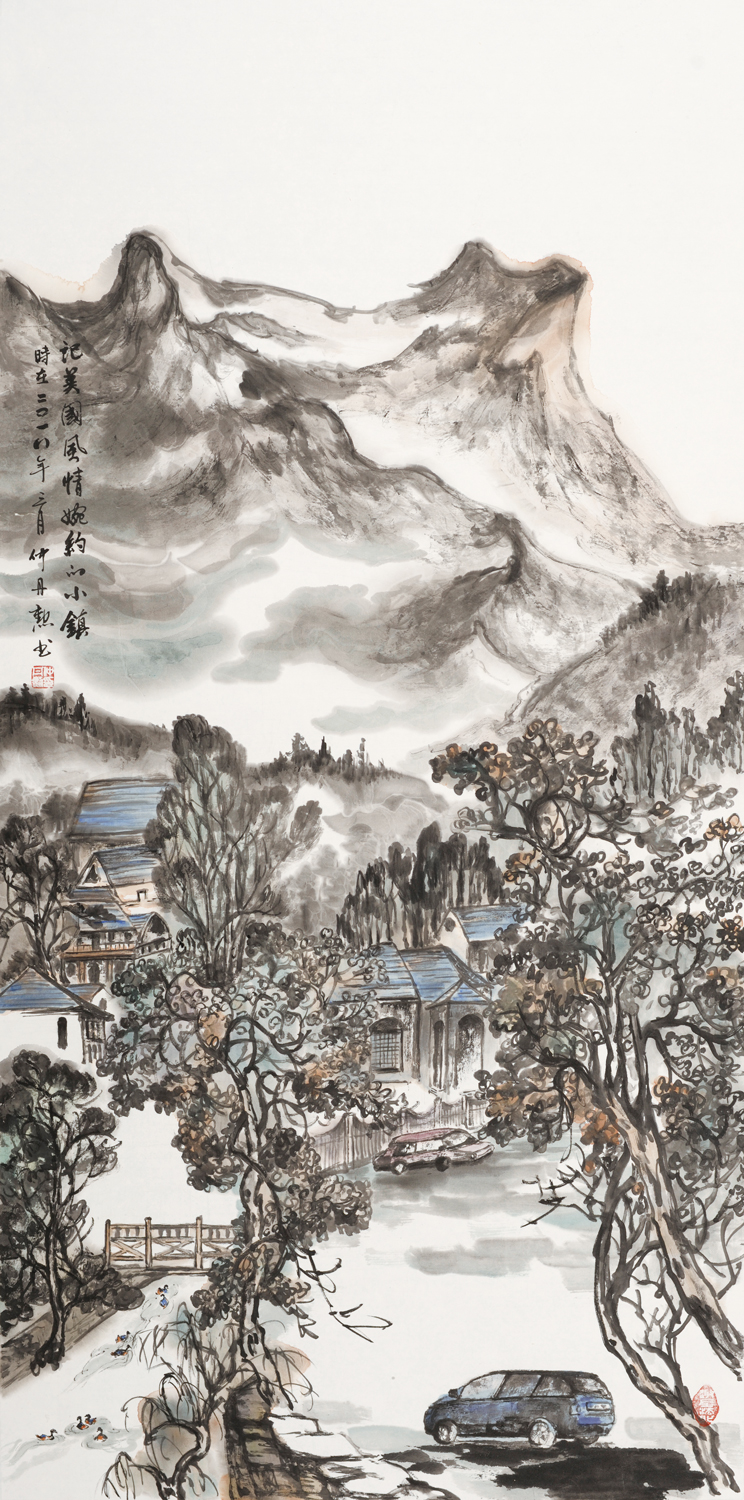
美国风情婉约小镇 仲丹勋 138.8cm×68.5cm 中国画 2018
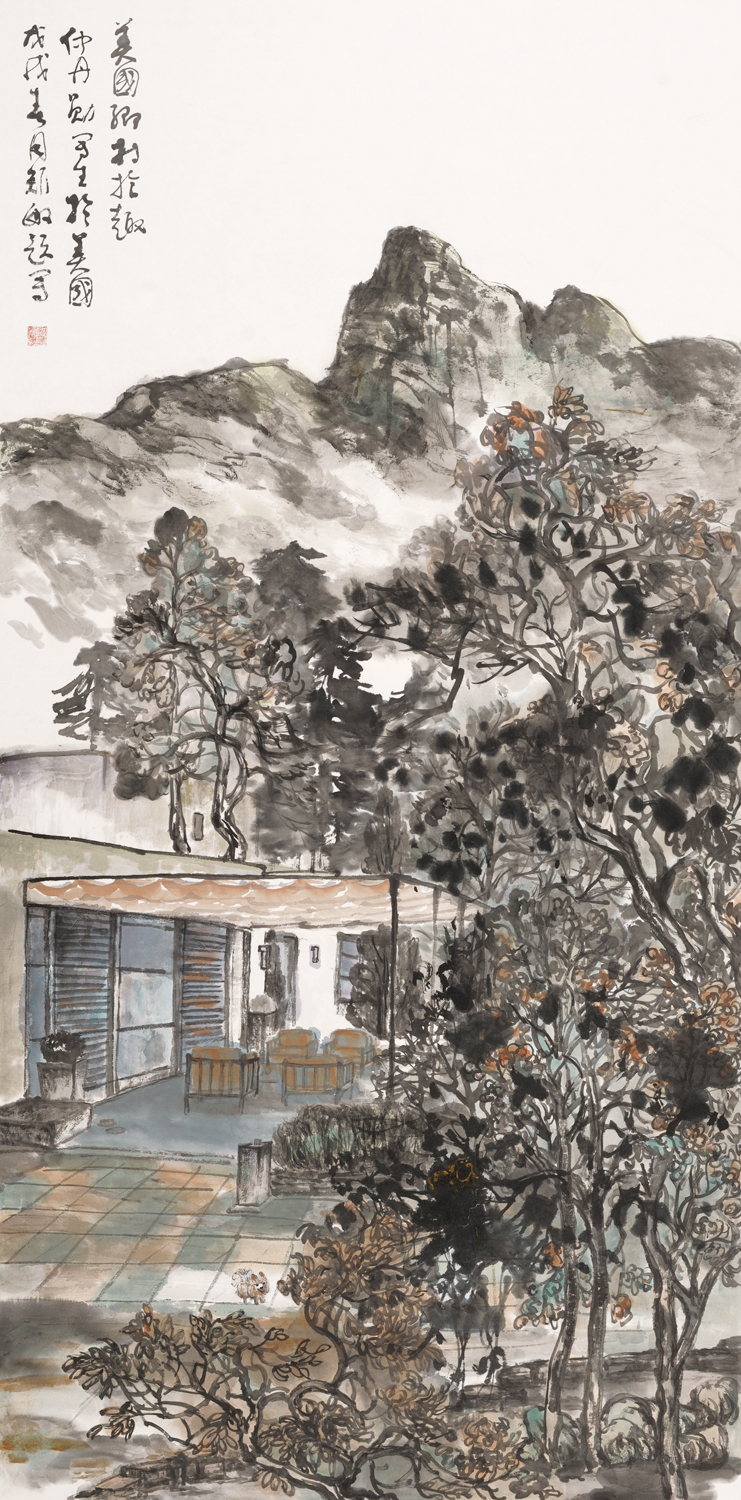
美国乡村拾趣 仲丹勋 138.8cm×68.5cm 中国画 2018

查尔斯顿高尔夫球场 仲丹勋 55cm×68.5cm 中国画 2015
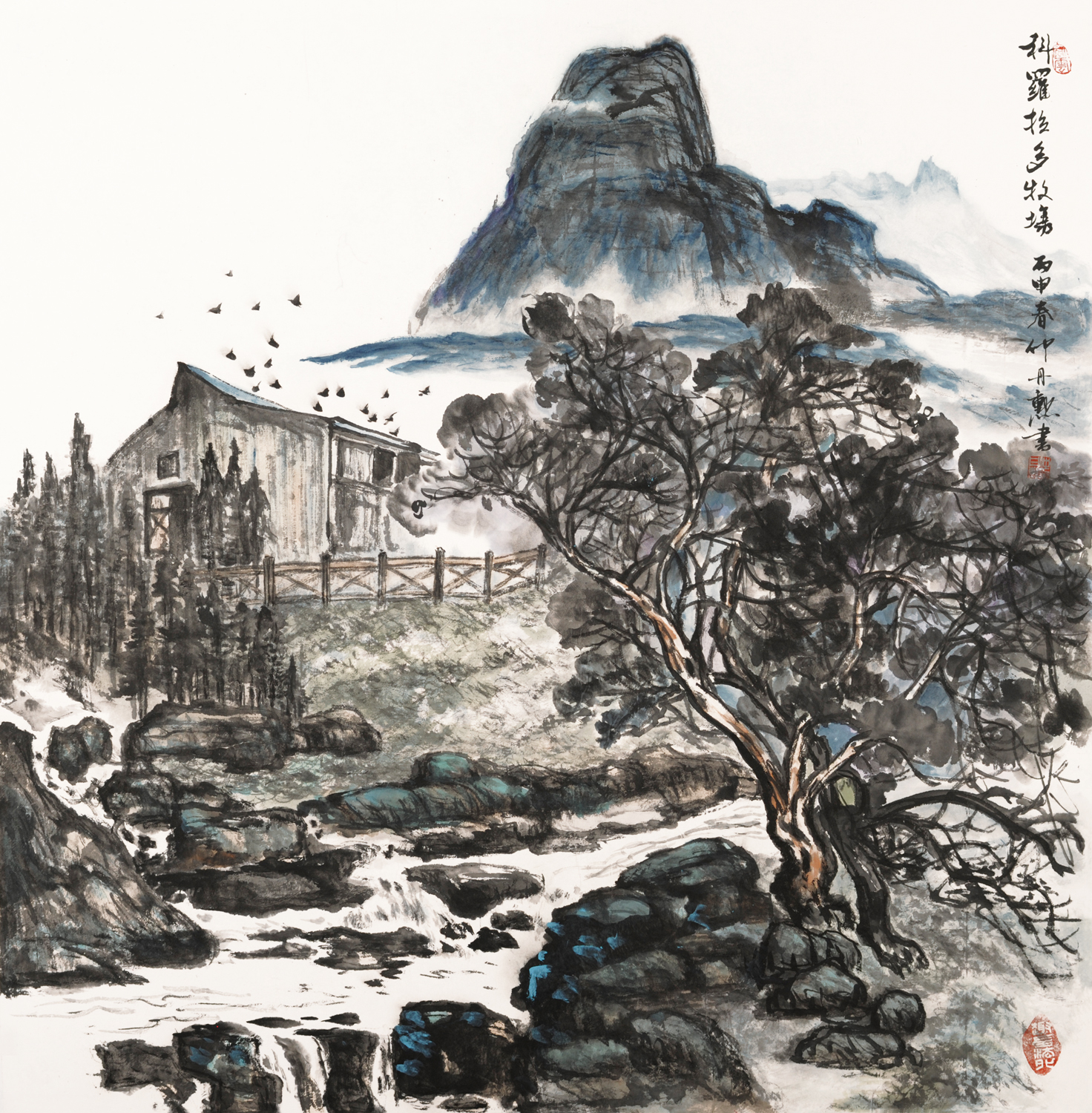

洛杉矶写生 仲丹勋 70.5cm×54.8cm 中国画 2017
后 记
仲丹勋少时从艺,是一位执着于中国画艺术的画家。上世纪八十年代初,她拜苏州名家,苏州国画院第二任院长、吴门画派研究会会长吴·木先生为师,为入室弟子。近年又拜学院派画家,苏州国画院第四任院长周矩敏教授为师,虽远在他乡,仍笔耕不辍,醉心于画艺。
仲丹勋曾研学于上海复旦大学、解放军艺术学院等院校,作品多次参展并获奖,并被国内多所机构等收藏。三十多年的创作生涯中,她一直在尝试将清秀古雅、恬静平和的吴门画风融入西方绘画的技法和现实生活中的元素,这种创作演变可以说是一个循序渐进的过程。在上世纪九十年代,仲丹勋移居美国后,逐渐寻求以中国艺术的诗意来表现异国的风景和生活中的现代化元素,在写实与写意之间寻求一种平衡,在用色用笔等技法上也有着一些实验性的探索。这种看似疏离传统的探索,实际上体现了艺术家自身对中国画艺术、对西方文化的一种个人化理解。
当我们面对仲丹勋的作品,并以更为广阔的文化视角进行考察时,似乎可以看到,这些作品反映了更深层次的文化现象。作为上层建筑的绘画,同其他社会意识既有联系又有区别,它反映了社会生活的多个方面,使欣赏者从不同的绘画作品中看到不同时代、不同地区和不同民族的生活情景。在中西文化交流的层面,仲丹勋则以其特殊身份在促进中西文化之间的交流与融合方面承担了桥梁和纽带的重任。
仲丹勋曾研学于上海复旦大学、解放军艺术学院等院校,作品多次参展并获奖,并被国内多所机构等收藏。三十多年的创作生涯中,她一直在尝试将清秀古雅、恬静平和的吴门画风融入西方绘画的技法和现实生活中的元素,这种创作演变可以说是一个循序渐进的过程。在上世纪九十年代,仲丹勋移居美国后,逐渐寻求以中国艺术的诗意来表现异国的风景和生活中的现代化元素,在写实与写意之间寻求一种平衡,在用色用笔等技法上也有着一些实验性的探索。这种看似疏离传统的探索,实际上体现了艺术家自身对中国画艺术、对西方文化的一种个人化理解。
当我们面对仲丹勋的作品,并以更为广阔的文化视角进行考察时,似乎可以看到,这些作品反映了更深层次的文化现象。作为上层建筑的绘画,同其他社会意识既有联系又有区别,它反映了社会生活的多个方面,使欣赏者从不同的绘画作品中看到不同时代、不同地区和不同民族的生活情景。在中西文化交流的层面,仲丹勋则以其特殊身份在促进中西文化之间的交流与融合方面承担了桥梁和纽带的重任。
常熟美术馆馆长 吴文雄
Postscript
Danxun Zhong started painting in her youth and has continuously been a Chinese painting artist.
In the 1980’s, Ms. Zhong had the privilege of studying and later becoming a disciple under the second president of the Suzhou Traditional Chinese Painting Academy and Wu Men Academy’s famous Suzhou artist, Mr. Wu Yang Mu. As she continued to pursue painting, in recent years, she subsequently studied and then became a disciple under Professor Zhou Ji Min, an Art Academy graduate as well as the fourth president of the Suzhou Traditional Chinese Painting Academy. Although she is far away from her homeland, nonetheless she has continued to tirelessly improve and explore the artistry and techniques behind Chinese paintings.
Danxun Zhong studied at Fudan University in Shanghai and the Art Academy of the People's Liberation Army. Her works have been exhibited, won many awards, and collected by various institutions in China. During her 30-year career, she has integrated the light and elegant Wumen artistry approach into the techniques of Western painting and the elements of real life-- a gradual evolution of her artistic style. In the 1990s, after moving to the United States, Danxun Zhong sought to express the foreign scenery and the modern elements in life with the classic poetic manner of Chinese art. She sought to find a balance between realism and freehand brushwork. As she experimented and explored techniques to create art that is uniquely hers, this seemingly distinctive exploration actually reflects the artist's own personal understanding of Chinese painting and Western culture.
When we look at the works of Danxun Zhong and contemplate them from a broader societal perspective, it is clear that these works reflect a more profound cultural phenomenon. Her superstructural paintings are a combination of familiarity and unfamiliarity of different social consciousness. Her art reflects many aspects of social life, which allows the viewer to see the life scenes of different eras, different regions and different nationalities from different paintings. At the level of Sino-Western cultural exchanges, Danxun Zhong has taken on the distinct responsibility of building cultural bridges and promoting the dialogue and integration of Chinese and Western cultures in her own capacity.
In the 1980’s, Ms. Zhong had the privilege of studying and later becoming a disciple under the second president of the Suzhou Traditional Chinese Painting Academy and Wu Men Academy’s famous Suzhou artist, Mr. Wu Yang Mu. As she continued to pursue painting, in recent years, she subsequently studied and then became a disciple under Professor Zhou Ji Min, an Art Academy graduate as well as the fourth president of the Suzhou Traditional Chinese Painting Academy. Although she is far away from her homeland, nonetheless she has continued to tirelessly improve and explore the artistry and techniques behind Chinese paintings.
Danxun Zhong studied at Fudan University in Shanghai and the Art Academy of the People's Liberation Army. Her works have been exhibited, won many awards, and collected by various institutions in China. During her 30-year career, she has integrated the light and elegant Wumen artistry approach into the techniques of Western painting and the elements of real life-- a gradual evolution of her artistic style. In the 1990s, after moving to the United States, Danxun Zhong sought to express the foreign scenery and the modern elements in life with the classic poetic manner of Chinese art. She sought to find a balance between realism and freehand brushwork. As she experimented and explored techniques to create art that is uniquely hers, this seemingly distinctive exploration actually reflects the artist's own personal understanding of Chinese painting and Western culture.
When we look at the works of Danxun Zhong and contemplate them from a broader societal perspective, it is clear that these works reflect a more profound cultural phenomenon. Her superstructural paintings are a combination of familiarity and unfamiliarity of different social consciousness. Her art reflects many aspects of social life, which allows the viewer to see the life scenes of different eras, different regions and different nationalities from different paintings. At the level of Sino-Western cultural exchanges, Danxun Zhong has taken on the distinct responsibility of building cultural bridges and promoting the dialogue and integration of Chinese and Western cultures in her own capacity.
Director of Changshu Art Museum Wenxiong Wu















